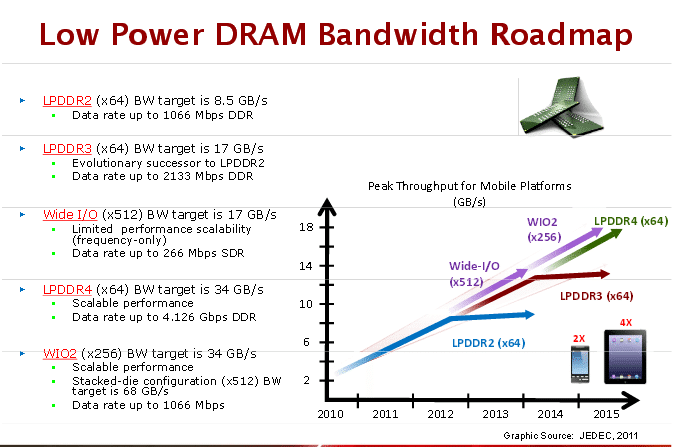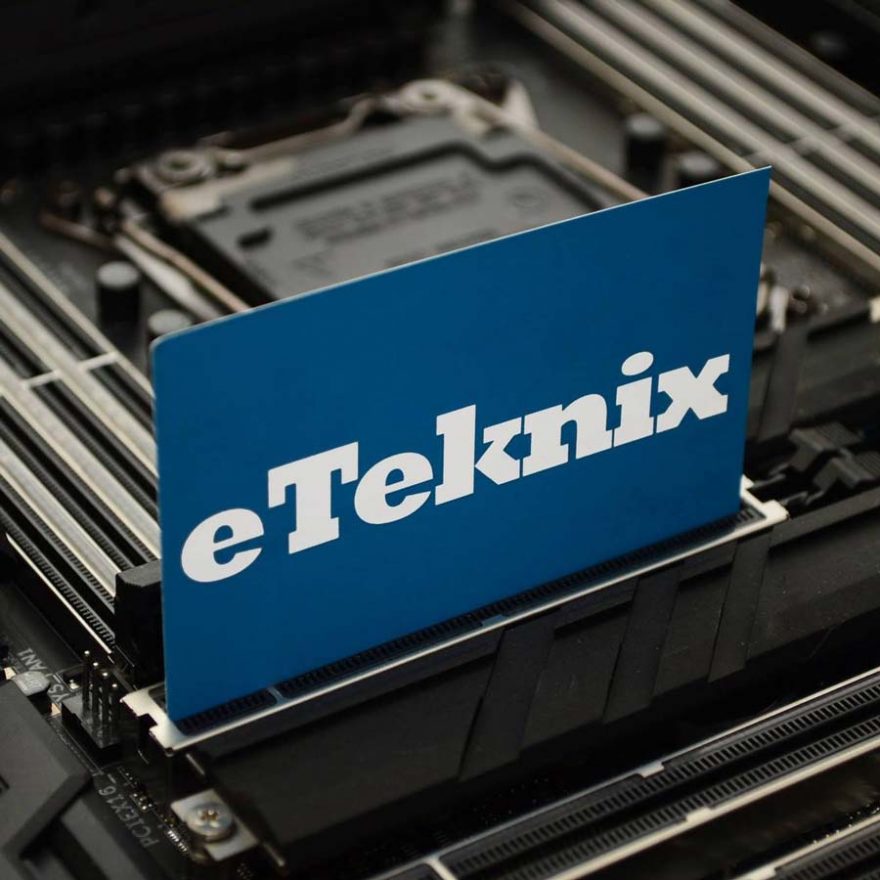JEDEC Release LPDDR4 Standard: DDR4 For Tablets, Smartphones, Notebooks
Ryan Martin / 10 years ago

DDR4 for the desktop may be just around the corner with Intel’s X99 Haswell-E launch at the end of this month but DDR4 for the mobile market is a bit further off. Today JEDEC announced the new “JESD209-4” LPDDR4 standard for low power devices such as tablets, smartphones, notebooks and other mobile devices. Compared to LPDDR3, which can operate up to 2133 MT/s, LPDDR4 will start at 3200 MT/s and operate up to 4266 MT/s – that’s up to double the speed. JEDEC claim that an architecture redesign was needed to achieve this doubling of speed, moving from a one channel die with 16 bits per channel to a dual channel die with 16 bits per channel meaning a total of 32 bits.
In order to reduce power consumption JEDEC have also transitioned to a new form of I/O signalling called low voltage swing terminated logic (LVSTL). LVSTL consumes 50% less power, 367-440mV in total, than the I/O voltage swing of LPDDR3. The operating voltage has also been reduced from 1.2 volts down to 1.1 volts, similar to what we’ve seen with the desktop class DDR3 to DDR4 transition which has gone from 1.5 volts to 1.25 volts.
Key specifications of LPDDR4 include:
- Two-channel architecture
- Internal Vref supplies for CA and DQ
- Data Bus Inversion (DBI-DC)
- ODT for CA and DQ
- I/O throughput: 3200 MT/s, rising to 4266 MT/s
- Signaling voltage: 367mV or 440mV
- Operating voltage: 1.1V
- Pre-fetch size: 32B per channel
- Topology: Point to point, PoP, MCP
- Max I/O capacitance: 1.3pF
- Write leveling
- 6-pin SDR CA bus CA training (12 pins per two channels)
- As with previous low-power DRAM generations, LPDDR4 does not require a delay-locked loop (DLL) or phase-locked loop (PLL)
It’s worth noting JEDEC are only announcing the initial standard, production is still some way off. Most importantly for consumers is the fact that when LPDDR4 finds its way into electronic devices they should benefit from faster memory bandwidth, better performance and lower power consumption which will translate into longer battery life.
Source: JEDEC, Via: TechPowerUp
Image courtesy of JEDEC



















